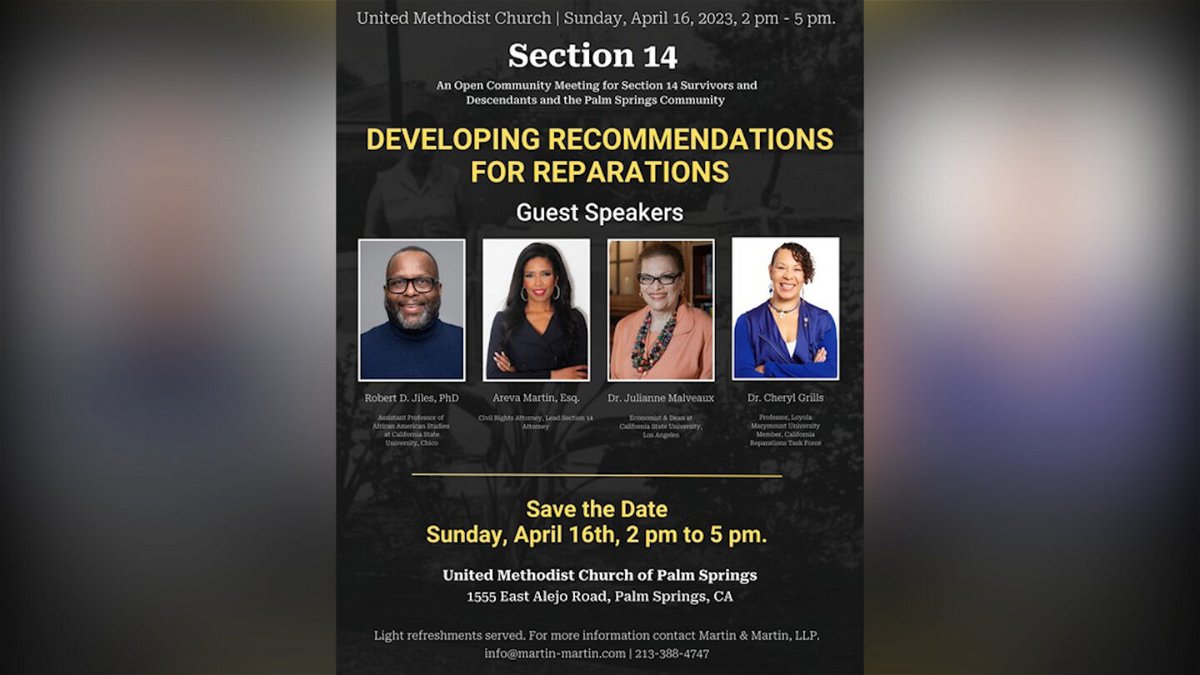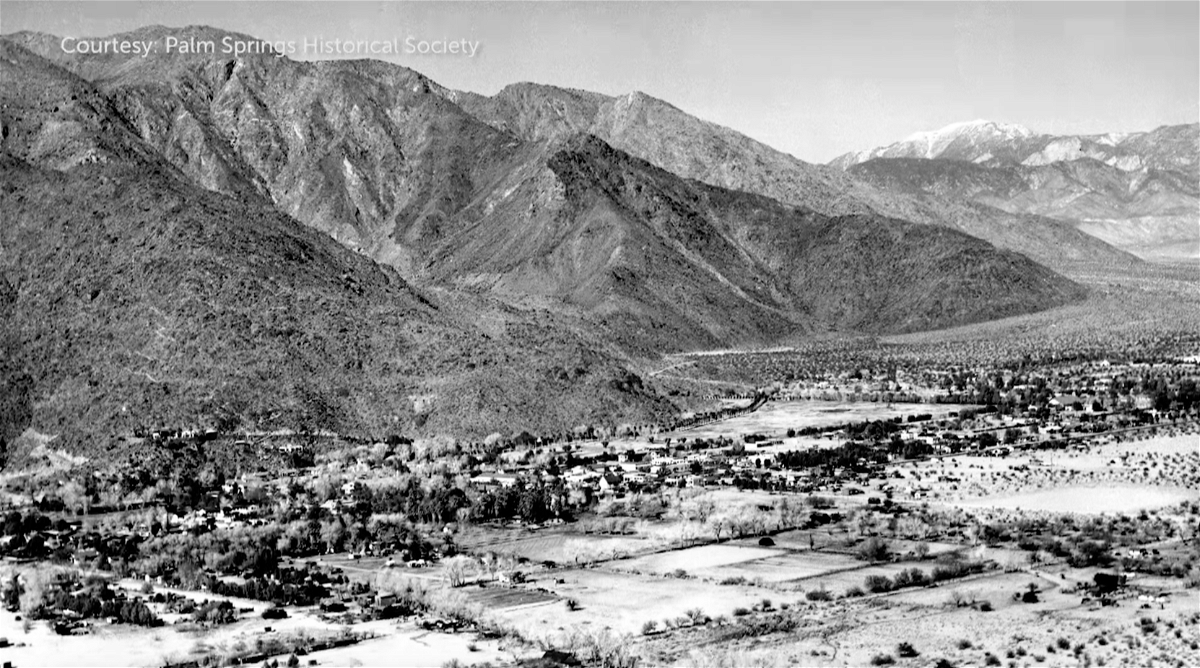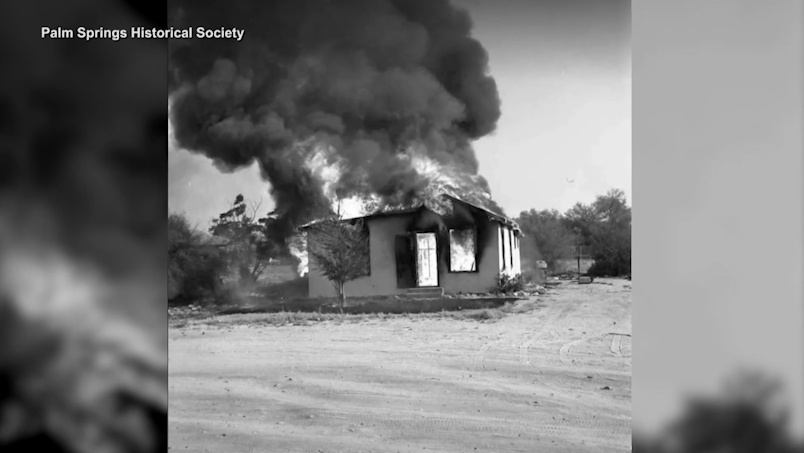Black, Mexican families to address reparations for Palm Springs evictions

Supporters of hundreds of Black and Mexican families who were forcibly evicted from the Palm Springs Section 14 neighborhood in the 1950s and 1960s will speak about their case for reparations later this month in Palm Springs.
The open community meeting will be held from 2-5 p.m. on April 16 in the United Methodist Church of Palm Springs at 1555 East Alejo Road, according to publicist Wyllisa Bennett.
Attendees will include Areva Martin, an attorney for the Section 14 survivors and descendants; economist and Cal State LA dean Julianne Malveaux; Cal State Chico assistant professor of African American Studies Robert Jiles; and Cheryl Grills, LMU professor, director of the Psychology Applied Research Center and a member of the California Reparations Task Force.
Section 14 -- a one-square-mile neighborhood owned by the Agua Caliente Band of Cahuilla Indians -- was the primary residential area for people of color from 1930 to 1965. The evictions began in late 1954 and continued through 1966. An estimated 200 homes were destroyed in the mass eviction process, according to the city.



"Over the past two years, the City Council and staff have set out on a course aimed at making right what happened during that period," former Palm Springs Mayor Lisa Middleton said in November 2022. "While this process may seem to be taking longer than some might like, the city has an obligation, not only to those who were displaced, but also to its residents, businesses and taxpayers, to thoroughly investigate the history as it develops remedial programs that are fair to everyone."
Palm Springs formally apologized for the evictions in September 2021, and the City Council asked its staff to develop proposals for possible economic investments that could act as reparations. The city also removed a statue of Frank Bogert -- who was Palm Springs mayor at the time -- from the front of
City Hall.
A resolution approved by the council two years ago stated that "Mayor Bogert and Palm Springs civic leaders persecuted their lower-income constituents who resided on the land owned by local Tribal Members. Attempting to dispossess the Indians of their tribal lands, and erase any blighted neighborhoods that might degrade the city's resort image, Palm Springs officials developed and implemented a plan that included having non-Indian conservators appointed by a local judge to manage the Indians land claiming they were unable to manage it for themselves. The successful implementation of this plan resulted in the removal of the city's people of color and restructured the race and class configuration of the city."
